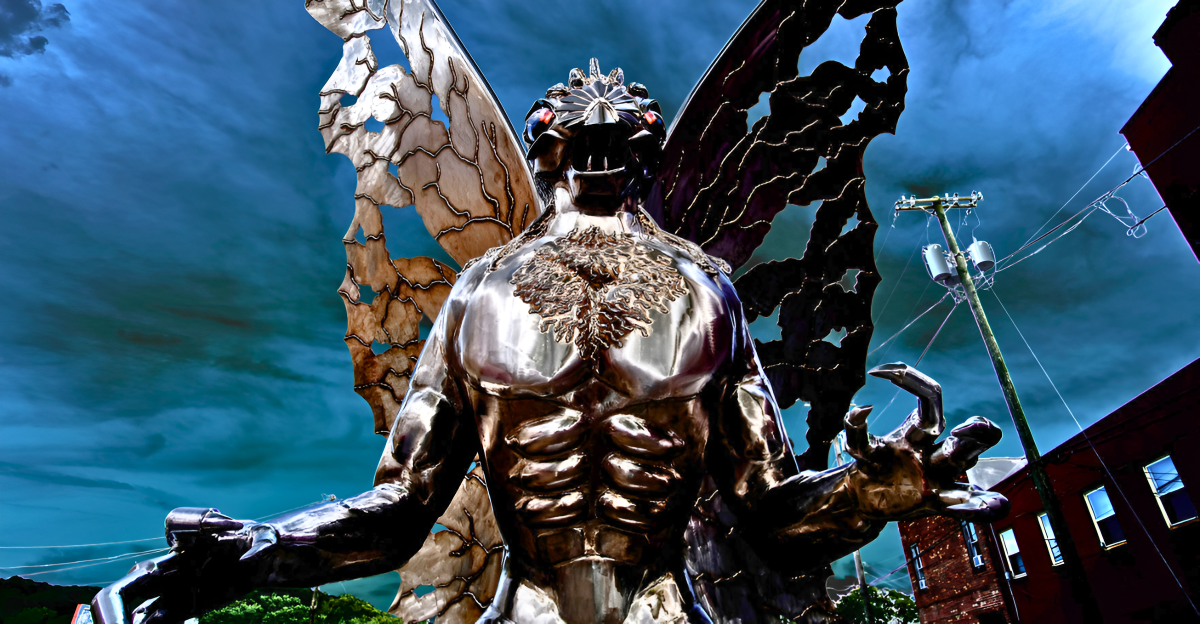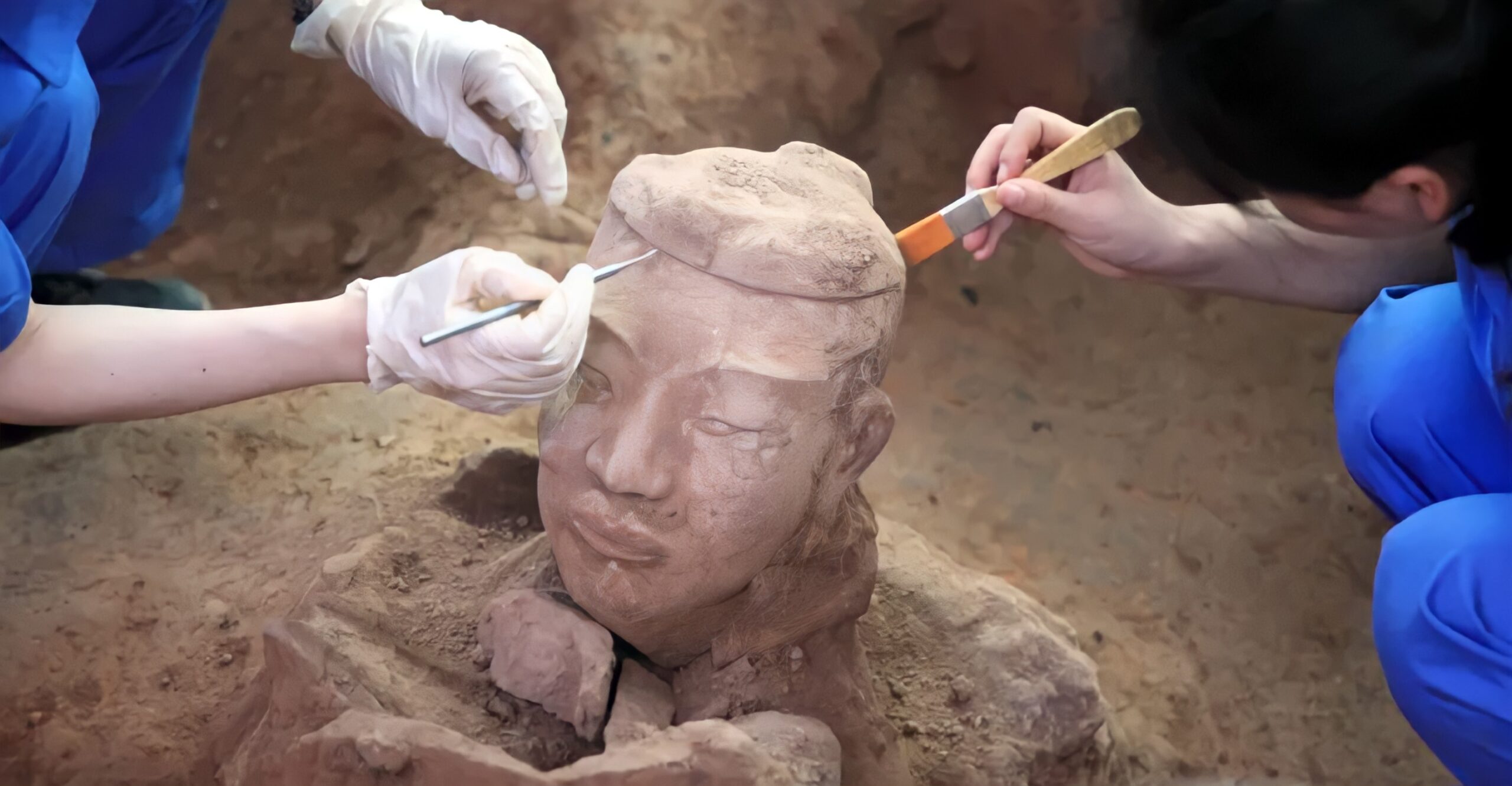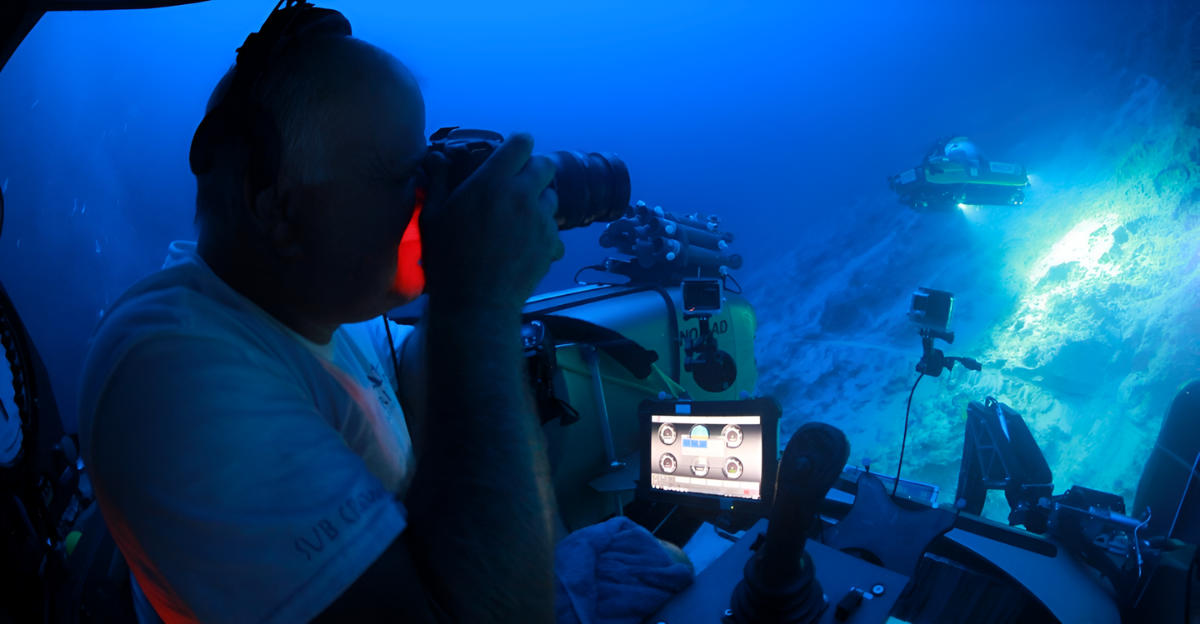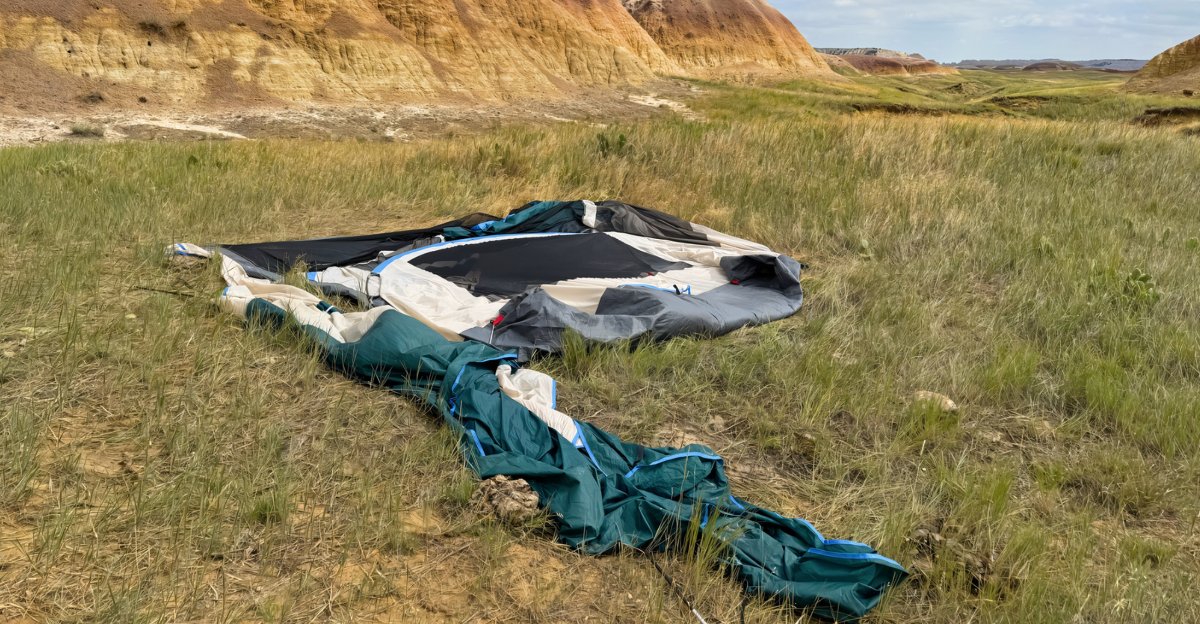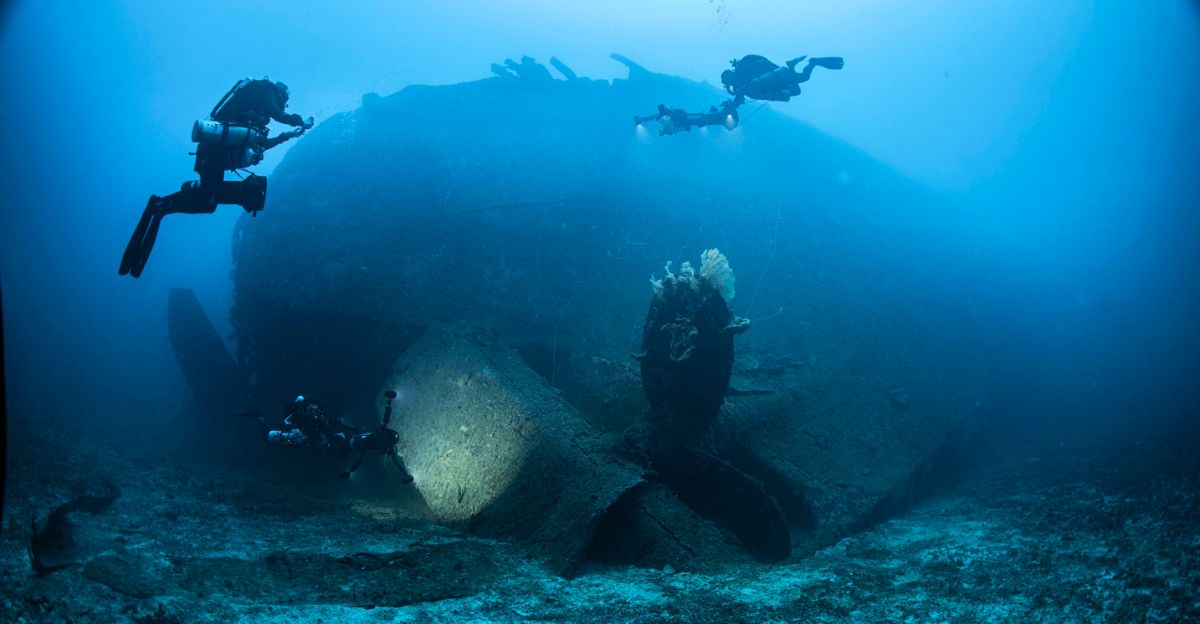
Deep in the Pacific, where sunlight never reaches, lies an American war relic frozen in time. Recently, while exploring the wreck of a legendary aircraft carrier, explorers made an unexpected find: not bombs or warplanes, but a relic from the home front.
This discovery, revealed recently by NOAA Ocean Exploration, has left historiansand the public alike scratching their heads. What on earth is a fully intact pre-War 1940s automobile doing at the bottom of the ocean next to a sunken warship?
The USS Yorktown story is one of heroism and loss but this chapter in that saga is something entirely different, a mystery wrapped in rust and barnacles127.
A Faint Outline
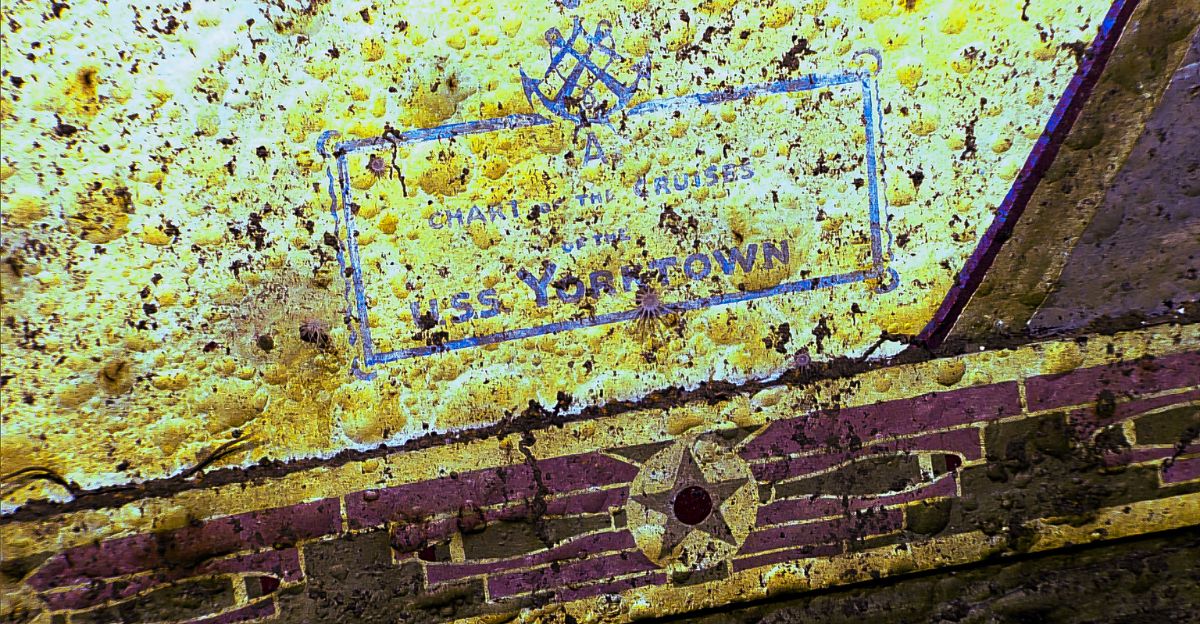
On April 19, 2025, as a remotely operated vehicle (ROV) glided through the darkness, its lights revealed a shape that didn’t belong — a faint outline of an automobile, resting in the aft hangar deck of the USS Yorktown.
Researchers aboard the NOAA ship Okeanos Explorer watched in real time as the ROV’s cameras captured the unexpected sight. “It’s a car. That’s a full car,” one of the team members could be heard saying.
It was the first time anyone had ventured into the Yorktown’s hangar since her sinking in 1942 and it instantly transformed a routine exploration into a historical detective story.
The Unsinkable Ship
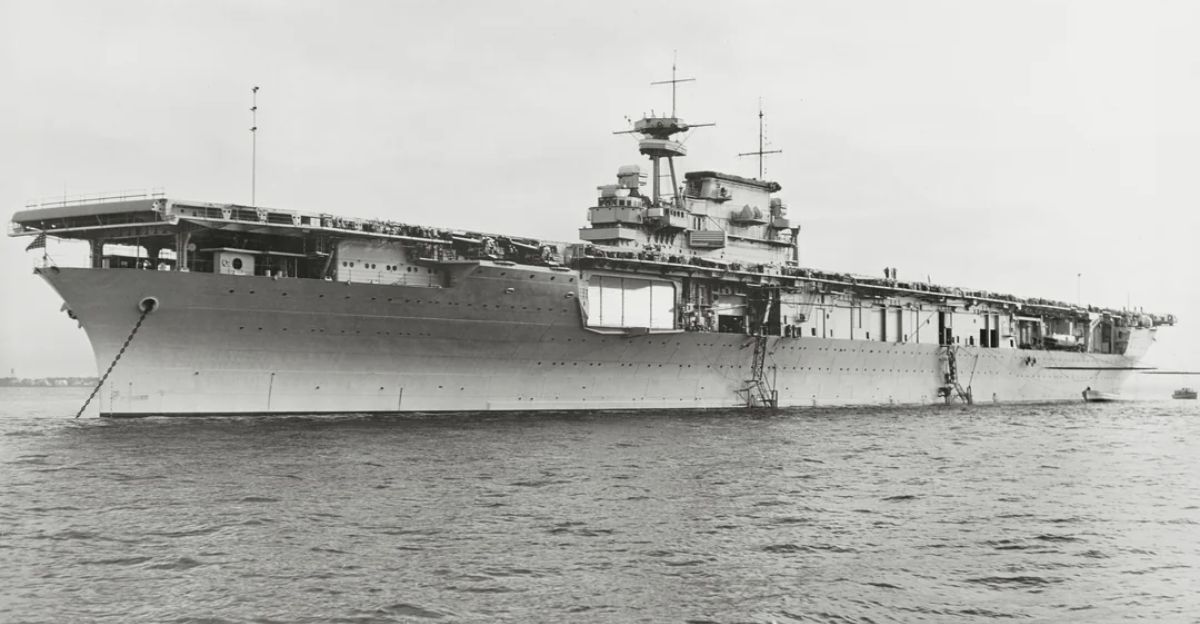
The USS Yorktown was no ordinary ship. She’d been commissioned in 1937, and had become a legend during World War II, surviving brutal battles and impossible odds. After sustaining heavy damage at the Battle of the Coral Sea, she returned to Pearl Harbor.
Yard workers, working around the clock, patched her up in just 48 hours — a job that left the Japanese astonished. Yorktown’s aircrafts played a pivotal role at Midway, sinking four enemy carriers.
Yet, despite her heroic efforts, she would end up a victim of a Japanese submarine’s torpedoes while being towed back to Hawaii, finally succumbing to the depths on June 7, 1942.
The Car That Shouldn’t Be There
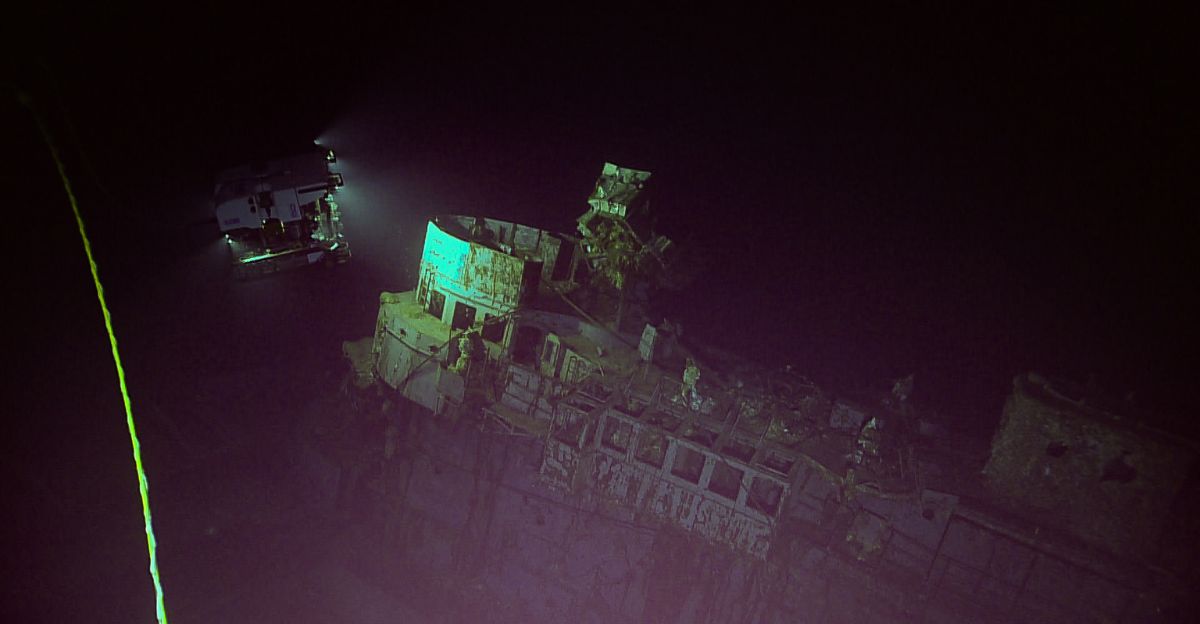
The discovery a black 1940-41 Ford Super Deluxe “Woody” found nestled inside a submerged carrier is baffling. What was a wood-paneled station wagon — more at home on Main Street than a warship — doing on the hangar deck?
The vehicle, which has the words “SHIP SERVICE _ NAVY” on its front plate, would likely have been used as a staff car for high-ranking officers or crew during port calls.
But why was it still on board when Yorktown sailed into battle? Whereas aircraft and anti-aircraft guns were jettisoned to save the ship, the car remained– perhaps a symbol of hope or a forgotten relic of peacetime.
The Science of Deep-Sea Discovery
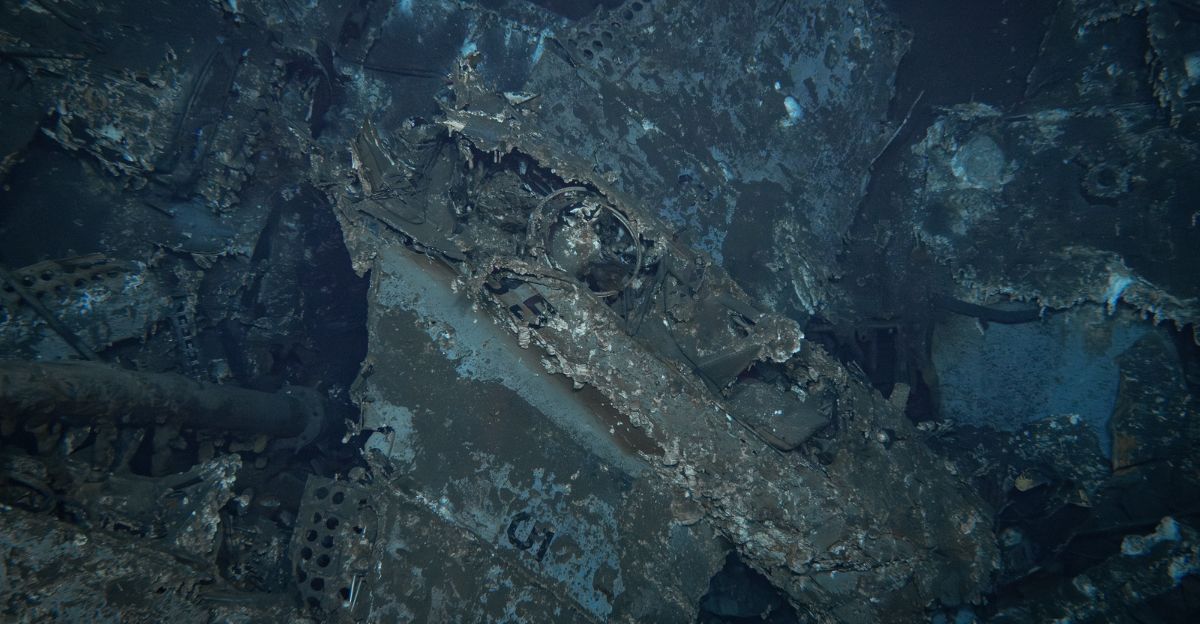
Exploring the Yorktown is no easy feat. Resting at a depth of 18,000 feet — too deep for human divers — the wreck was first found in 1998 by the oceanographer Robert Ballard. Since then, only a few robotic missions have delved into her secrets.
The most recent mission, which relied on advanced ROVs, not only revealed the Ford but also the remains of three Douglas SBD Dauntless dive-bombers — some of the only warplanes from Midway ever discovered beneath the waves. These discoveries are rewriting history, giving new insights into the chaos and heroism of the Pacific War.
The Human Stories Behind the Steel

Beyond the machinery, the Yorktown’s wreck is a memorial to the 2,200 men who served aboard her. The discovery of a hand-painted, 42×12-foot mural illustrates the pride and global reach of her crew.
Faded over time and damaged by water, the mural, at one time, depicted the voyages of the ship and the dynamic, strategic role it played in protecting the United States.
These artifacts remind us that war is not just fought with weapons, but with the hearts and minds of those who serve, and sometimes, with the most unexpected personal belongings.
The Cultural Legacy of a Sunken Relic

The Yorktown’s wreck is not just a historical site, but an underwater museum. Each artifact — from the Ford car to the dive-bombers — tells a story about innovation, sacrifice, and the blurring line between civilian abnd military life.
The car, in particular, that’s a stark reminder that even in the midst of war, people brought pieces of home with them. Its presence aboard a doomed warship challenges our understanding of naval logistics, and the lengths to which crews went to maintain morale and normalcy in extraordinary circumstances.
Controversy and Curiosity
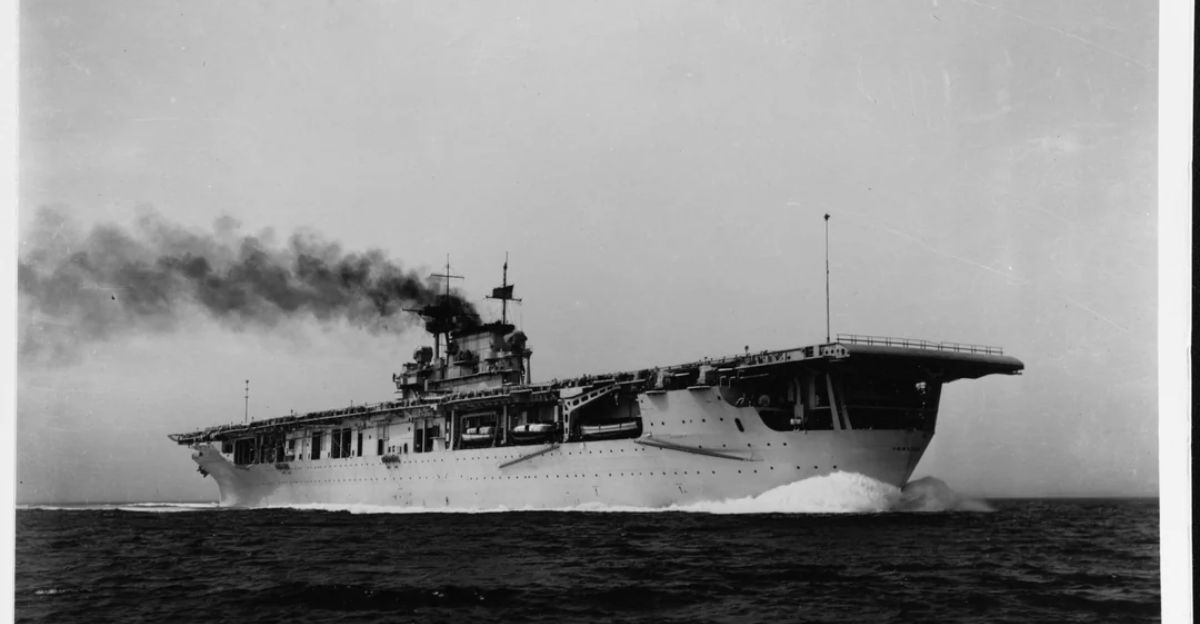
Why was the car not jettisoned like other non-essential equiptment as the Yorktown fought for survival? Was it cherished by the crew or officers? Or was it simply overlooked in the chaos of battle? These questions have generated much heated debate within the community of naval historians and enthusiasts.
Some speculate that the car was a status symbol belonging to high-ranking officers; others suspect it was used for shore duties during port calls. Whatever the explanation, its survival is a testament to the unpredictability of history — and the enduring mysteries of the deep.
The Hidden Gem of the Deep

Among the wreckag, the Ford Woody stands out as a hidden gem — a relic that links the past to the present in a tangible way. Its wood paneling, now rotted away, once made it a stylish and practical vehicle.
The inscription “SHIP SERVICE _ NAVY,” speaks to its official purpose, but its trtue story remains elusive. For the explorers who found it, the car is a reward for perseverence, a reminder that even the most carefully documented history can still surprise us with its secrets.
A Final, Unforgettable Image
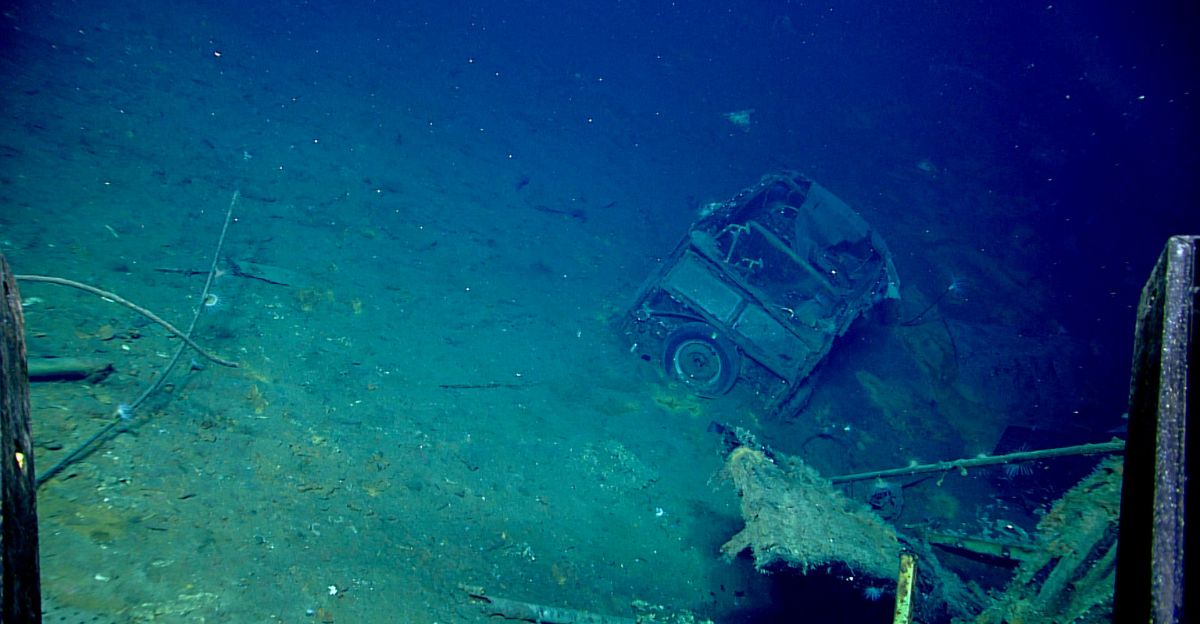
The journey to the Yorktown’s wreck ends with a powerful image: a sleek, black Ford Woody, resting sliently among the ruins of a once-mighty warship. It represents resilience, curiosity, and the enduring human spirit.
As the ROV’s lights flicker across its rusted frame, we are reminded that history is not just written in textbooks, but in artifact we leave behind, sometimes in the most unexpected places. The story of the Yorktown and her mysterious car will continue to captivate and inspire, as long as there are explorers willing to seek out the unknown.

